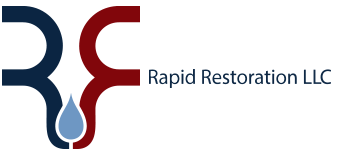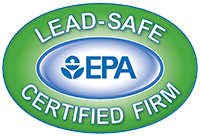Fire Cleanup, Smoke, Odor, and Soot Removal, Including Pack-Outs
Fires are frightening in their potential for destroying life and property. If you have been the unfortunate victim of fire damage, you will want to recover your losses quickly. However, your natural instinct to clean, coupled with your understandable emotional distress, could prove to be hazardous and ineffective.
A fire loss is very complex because of the unique behavior of smoke. It is important to have an experienced restoration team on your side. Fast treatment will help reduce smoke and soot health hazards.
Rapid Restoration is the most comprehensive resource for fire damage services, assessment, and recovery. Hot smoke migrates to cooler areas and upper levels of a structure. Smoke flows through plumbing cavities and HVAC systems, the hot embers of a fire will often damage the interior of the HVAC system and duct work.
An unfortunate side effect of fires is that your home/ office will often experience water damage as a result of putting out the fire, this is more of a concern with smaller fires. The type of smoke will greatly affect the restoration process.
Types of Smoke
One of the first steps at a fire scene is to calm the fears of those affected. Next, our technicians tests the smoke to see which of the following types of fire took place.
Wet Smoke – Low heat, smoldering, pungent odor, sticky, smeary; smoke webs are more difficult to clean
Dry Smoke – Fast burning at high temperatures.
Protein – Virtually invisible, discolors paints and varnishes; extreme pungent odor
Fuel Oil Soot – Furnace puff backs cause fuel oil soot
Other Types – Includes tear gas, fingerprint powder, and fire extinguisher residue
After the type of smoke is determined, pre-testing on the property is performed to determine the following:
- What can be restored versus what should be replaced
- The most effective cleaning method
- Conditions to the property before the damage occurred
- The full extent of the loss
- Eliminate needless replacements
- Pre-testing also allows ACME Flood focus on saving precious items for you, and that is what really matters!
Emergency Checklist for Fire Clean-up
Do’s:
- Limit movement in the home to prevent soot particles from being imbedded into upholstery and carpets
- Keep hands clean. Soot on hands can further soil upholstery, walls and woodwork
- Blow or brush vacuum loose soot particles from upholstery, drapes and carpets
- Place clean towels or old linens on rugs, upholstery and carpet traffic areas
- If electricity is off, empty freezer and refrigerator completely and prop doors open
- Clean and protect chrome on kitchen and bathroom faucets, trim and appliances with light coating of Vaseline or oil
Wash house plants on both sides of leaves - Change HVAC filter
- Tape double layers of cheesecloth over air registers
Dont’s:
- Attempt to wash any walls or painted surfaces without first contacting us
- Attempt to shampoo carpet or upholstered furniture without first consulting us
- Attempt to clean any electrical appliances, TV sets, radios, etc. that may have been close to fire, heat or water without first consulting an authorized repair service
- Use any canned or packaged food or beverages that may have been stored close to fire, heat or water (They may be contaminated)
- Turn on ceiling fixtures if ceiling is wet; wiring may be wet or damaged
- Send garments to ordinary dry cleaner; improper cleaning may set smoke odor

